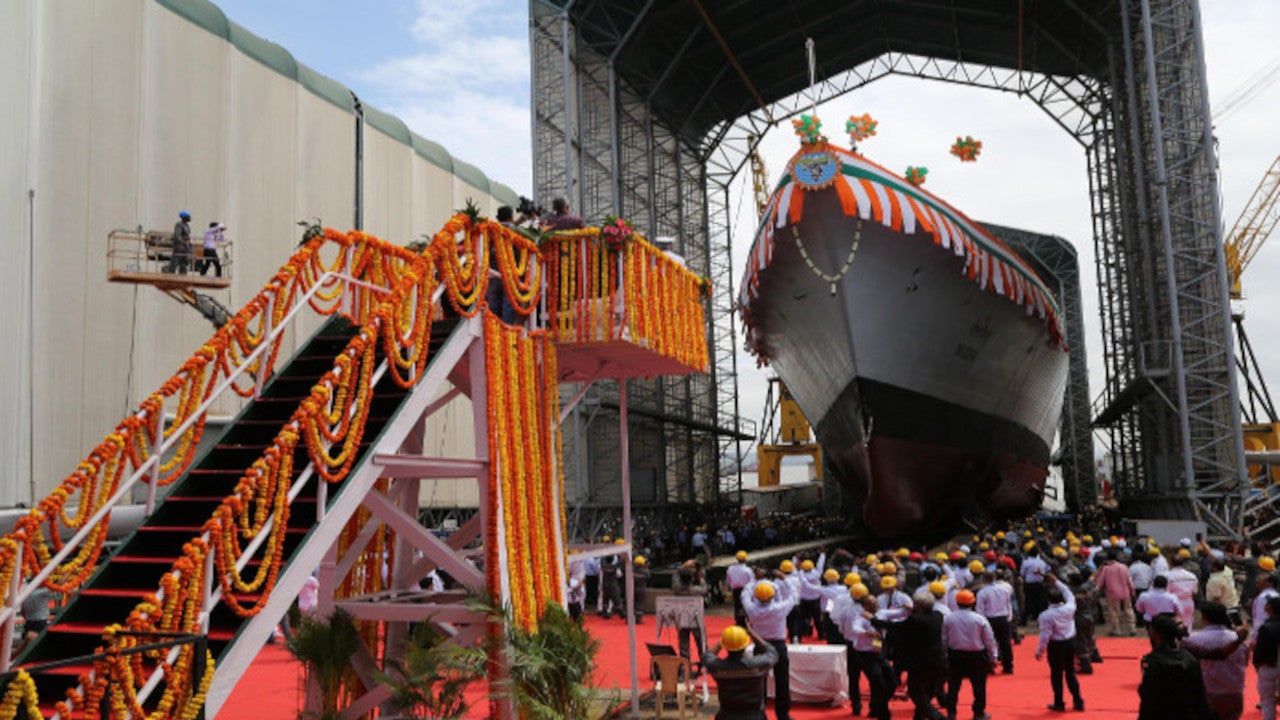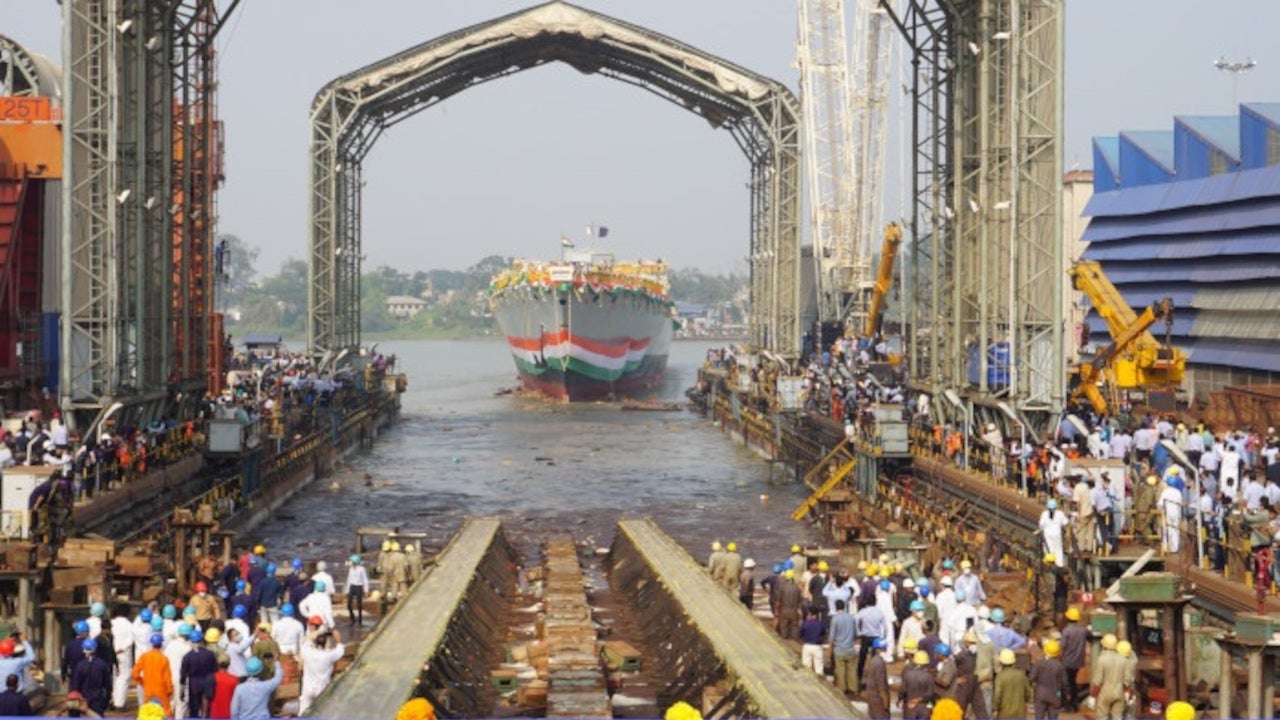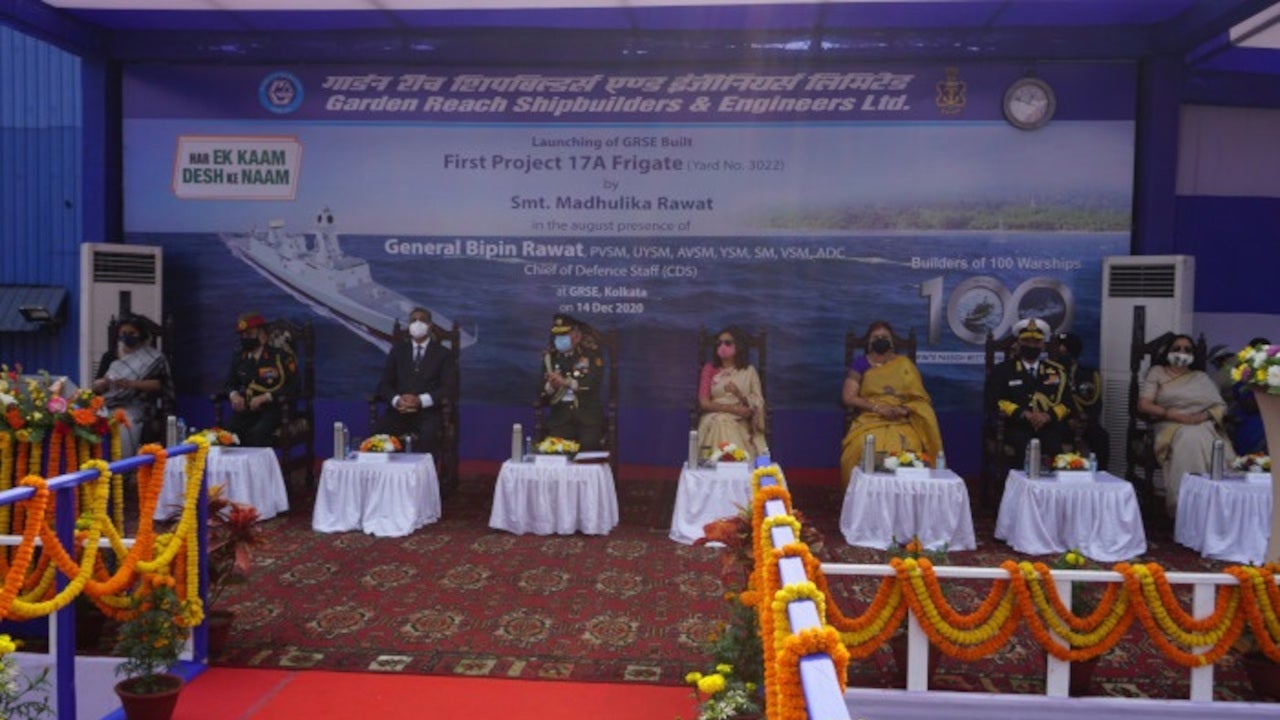The Nilgiri-class stealth frigates, also known as Project 17A frigates, are being built by Garden Reach Shipbuilders & Engineers (GRSE) and Mazagon Dock Shipbuilders for the Indian Navy.
The Project 17A programme involves the development of seven advanced guided-missile frigates, of which four will be built by Mazagon Dock Shipbuilders and the remaining three ships by GRSE.
The programme is a follow-on of the Project 17 Shivalik-class frigates. The first six ships will be named after the older Nilgiri-class vessels, which were the updated versions of British Leander class frigates.
The ships will be named INS Nilgiri, INS Himgiri, INS Udaygiri, INS Dunagiri, INS Taragiri, INS Vindhyagiri and INS Mahendragiri after the names of hill ranges in India.
The project will generate employment opportunities for more than 2,000 companies and MSMEs in the country. Approximately 80% of the materials and equipment are being sourced from domestic vendors for the ship construction.
Development of Project 17A Nilgiri-class frigates
The Project 17A programme was approved by the Indian Government in February 2015 to enhance the combat capabilities of the Indian Navy. The total estimated cost of the project is approximately Rs500bn ($7bn).
The lead ship of the class, INS Nilgiri, was launched at Mazagon Dock Shipbuilders, Mumbai, in September 2019. The keel for the third ship was laid in September 2020.
GRSE launched the first of its three Project 17A ships, Himgiri, in December 2020. It was floated out on the waters of Hoogly River in the Indian state of Kolkata and is expected to be delivered in August 2023.
Project 17A design and features
The Project 17A ship was locally designed by Directorate of Naval Design (Surface Ship Design Group). It will feature improved stealth capabilities and roll stabilisation than its predecessor.
The new design concept will help in achieving improved survivability, sea keeping and ship manoeuvrability. The guided-missile frigates will be equipped with advanced indigenous weapons and sensors.
The Nilgiri-class will have a length of 149m, a width of 17.8m and a draft of 5.22m. The displacement of the vessel will be 6,670t and the frigate will have the capacity to accommodate 226 personnel.
The stern flight deck of the frigates will have the capability to accommodate two medium-sized rotorcraft such as HAL Dhruv or Sea King Mk. 42B helicopters.
Weapons and sensors aboard Nilgiri-class
The frigates will be armed with a larger 127mm-calibre main gun for enhanced range, two 30mm AK-630M anti-aircraft artillery systems, two torpedo tubes, and launchers for 32 Barak-8 surface-to-air missiles and eight BrahMos supersonic cruise missiles.
The Barak-8 missiles can be fired from a vertical launch system that can launch multiple missiles simultaneously.
The multi-function surveillance track and missile guidance radar (MF-STAR) allows detection of multiple air and surface stealth targets at the same time.
Propulsion and performance
The Project 17A frigate will be powered by combined diesel and gas (CODAG) type propulsion system including two LM2500 marine gas turbines and two MAN 12V28/33D STC four-stroke diesel engines.
The propulsion system will also include gas turbine auxiliary equipment which includes gas turbine controller, intakes and uptakes, firefighting equipment, water wash, start skid and electric starters.
The vessel will cruise at a speed of 28k and attain a maximum range of 5,500nm.
Contractors involved
GE Marine was selected to deliver LM2500 marine gas turbines for the P17A stealth frigates, in December 2016. The gas turbines will be provided by GE’s partner Hindustan Aeronautics Limited (HAL) Industrial and Marine Gas Turbine division in India.
GE is also responsible to provide gas turbine auxiliary equipment along with 14 LM2500 engines for the seven Nilgiri-class frigates.
In May 2016, MAN Diesel & Turbo was contracted to provide 14 12V28/33D STC engines as well as auxiliary equipment, training and spare parts.
Mazagon Dock partnered with Fincantieri for the development of detailed engineering, design optimisation processes and modular construction, and technical assistance.




